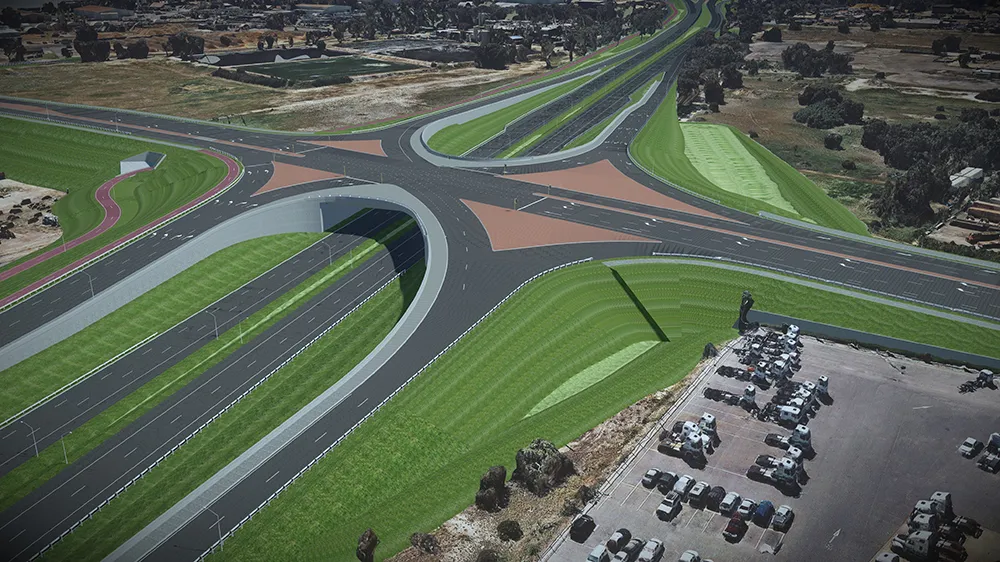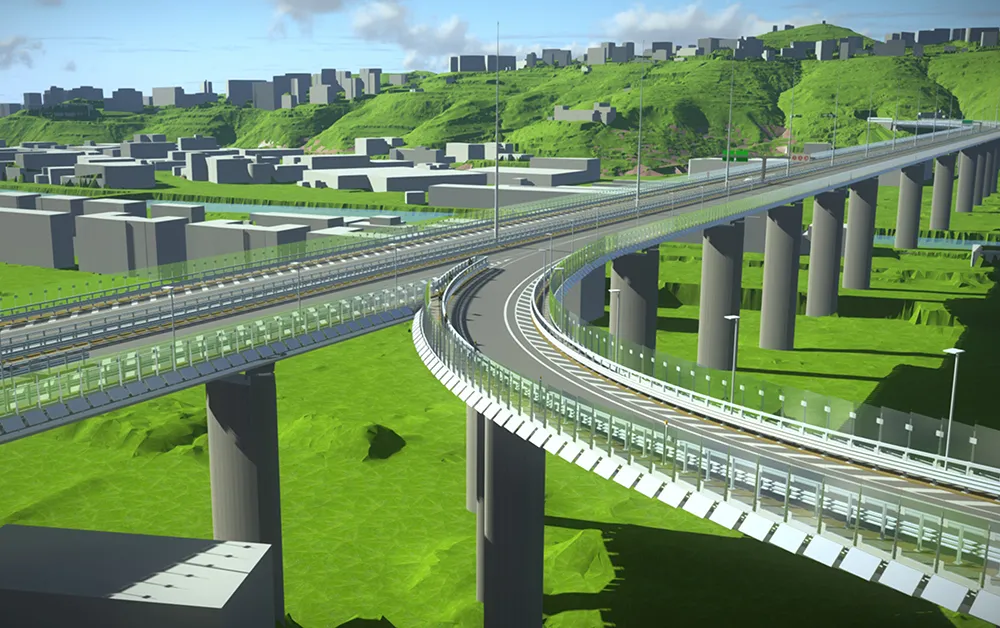
Located in eastern Perth, the Great Eastern Highway Bypass Interchanges project aims to upgrade two major interchanges at Roe Highway and Abernathy Road, which have become increasingly congested and caused significant delays for travelers. The AUD 380 million project will replace the current signalized intersections used by 60,000 motorists daily with two grade-separated interchanges. However, the design needed to ensure minimal impact on the surrounding Threatened Ecological Communities (TEC), the important Bush Forever sites, and a registered Aboriginal heritage site with hundreds of mature native trees. The only way to achieve this goal was by reducing the footprint of the exchange as much as possible while also maintaining the required level of functionality and accessibility for heavy vehicles. Upon completion, the renovations will improve freight efficiency, safety, and travel times, expected to shorten peak-hour journeys, while providing better connectivity to the Midland, surrounding suburban communities, and Perth airport industrial areas. Main Roads WA contracted Greater Connect Alliance, a consortium comprised of Arcadis, AECOM, and Laing O’Rourke, to develop, design, construct, and deliver the new interchanges and upgraded highway.
Click here for the video and case study
Embracing innovative digital strategies, the Greater Connect Alliance team determined that a holistic digital execution plan based on Bentley applications would enable them to better visualize and more efficiently complete the project. Leveraging OpenRoads Designer and OpenBridge Modeler as primary design applications, with ProjectWise and LumenRT for coordinated modeling and visual presentation, they established a connected data environment to streamline workflows and enhance decision-making. With Bentley’s integrated applications, the Greater Connect Alliance performed coordinated digital design reviews, clash detection, and construction staging; extracted accurate material quantities from the 3D model automatically; and created animations and visualizations for stakeholder and community engagement. By challenging traditional design and construction processes, the team facilitated downstream processes, such as automated parametric modeling, 4D construction scheduling, quantity dashboarding, and consolidated project visualization. IFC compatibility across software platforms enabled the construction team to utilize the metadata associated with the elements and conduct 4D and 5D modeling. The Bentley-based solution allowed them to push the boundaries with digital engineering, revolutionizing planning and execution of this major road project.
Adopting collaborative digital engineering strategies enabled the Greater Connect Alliance to visually review and compare design alternatives and determine an optimal design that resulted in less than 10 on-site clashes while saving 18 months in time. Working in an integrated digital platform using Bentley’s applications facilitated value engineering and sustainability, reducing material quantities and land acquisition. The team reduced the project footprint by 50%, offsetting the project’s impact on the surrounding environment.
Watch video and ready the full story to discover how Greater Connect Alliance saved approximately AUD 500,000, compared to previous projects by reducing materials and time between design and estimation. Find out how streamlined coordination allowed the team to save approximately AUD 600,000 and how the team demonstrated an agreed saving of AUD 10 million upon completion of the final design option for Lloyd Street Bridge.
Content produced in association with Bentley Systems









